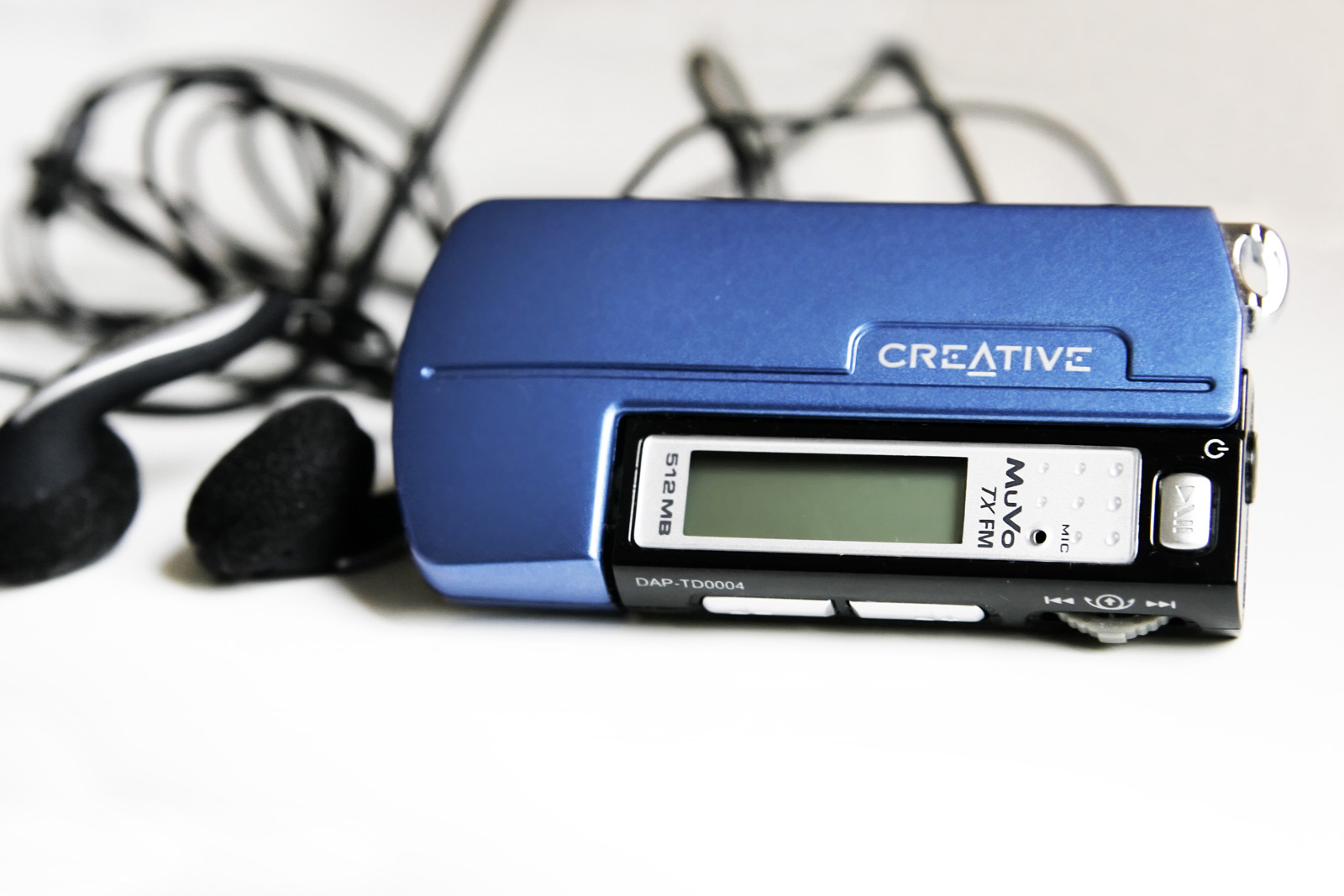|
MP3
MP3 (formally MPEG-1 Audio Layer III or MPEG-2 Audio Layer III) is a coding format for digital audio developed largely by the Fraunhofer Society in Germany under the lead of Karlheinz Brandenburg. It was designed to greatly reduce the amount of data required to represent audio, yet still sound like a faithful reproduction of the original uncompressed audio to most listeners; for example, compared to CD-quality digital audio, MP3 compression can commonly achieve a 75–95% reduction in size, depending on the bit rate. In popular usage, ''MP3'' often refers to files of sound or music recordings stored in the MP3 file format (.mp3) on consumer electronic devices. Originally defined in 1991 as one of the three audio codecs of the MPEG-1 standard (along with MP2 and MP1), it was retained and further extended—defining additional bit rates and support for more audio channels—as the third audio format of the subsequent MPEG-2 standard. MP3 as a file format commonly design ... [...More Info...] [...Related Items...] OR: [Wikipedia] [Google] [Baidu] |
Portable Media Player
A portable media player (PMP) or digital audio player (DAP) is a portable consumer electronics device capable of storing and playing digital media such as audio, images, and video files. Normally they refer to small, Electric battery, battery-powered devices utilising flash memory or a Hard disk drive, hard disk for storing various media Computer file, files. MP3 players has been a popular alternative name used for such devices, even if they also support other file formats and media types other than MP3 (for example Advanced Audio Coding, AAC, FLAC, Windows Media Audio, WMA). Generally speaking, PMPs are equipped with a 3.5 mm headphone jack which can be used for headphones or to connect to a boombox, home audio system, or connect to car audio and home High fidelity, stereos wired or via a wireless connection such as Bluetooth, and some may include radio tuners, voice recording and other features. In contrast, analogue portable audio players play music from non-digital m ... [...More Info...] [...Related Items...] OR: [Wikipedia] [Google] [Baidu] |
ISO/IEC 11172-3
MPEG-1 is a standard for lossy compression of video and audio. It is designed to compress VHS-quality raw digital video and CD audio down to about 1.5 Mbit/s (26:1 and 6:1 compression ratios respectively) without excessive quality loss, making video CDs, digital cable/satellite TV and digital audio broadcasting (DAB) practical. Today, MPEG-1 has become the most widely compatible lossy audio/video format in the world, and is used in a large number of products and technologies. Perhaps the best-known part of the MPEG-1 standard is the first version of the MP3 audio format it introduced. The MPEG-1 standard is published as ISO/ IEC 11172, titled ''Information technology—Coding of moving pictures and associated audio for digital storage media at up to about 1.5 Mbit/s''. The standard consists of the following five ''Parts'': #Systems (defining a format for storage and synchronization of video, audio, and other data together in a single file—later dubbed the MPEG pr ... [...More Info...] [...Related Items...] OR: [Wikipedia] [Google] [Baidu] |
MPEG-1
MPEG-1 is a Technical standard, standard for lossy compression of video and Audio frequency, audio. It is designed to compress VHS-quality raw digital video and CD audio down to about 1.5 Mbit/s (26:1 and 6:1 compression ratios respectively) without excessive quality loss, making video CDs, digital Cable television, cable/Satellite television, satellite TV and digital audio broadcasting (DAB) practical. Today, MPEG-1 has become the most widely compatible lossy audio/video format in the world, and is used in a large number of products and technologies. Perhaps the best-known part of the MPEG-1 standard is the first version of the MP3 audio format it introduced. The MPEG-1 standard is published as International Organization for Standardization, ISO/International Electrotechnical Commission, IEC 11172, titled ''Information technology—Coding of moving pictures and associated audio for digital storage media at up to about 1.5 Mbit/s''. The standard consists of the follow ... [...More Info...] [...Related Items...] OR: [Wikipedia] [Google] [Baidu] |
MPEG-1 Audio Layer II
MP2 (formally MPEG-1 Audio Layer II or MPEG-2 Audio Layer II, sometimes incorrectly called Musicam) is a lossy audio compression format. It is standardised as one of the three audio codecs of MPEG-1 alongside MPEG-1 Audio Layer I (MP1) and MPEG-1 Audio Layer III (MP3). The MP2 abbreviation is also used as a common file extension for files containing this type of audio data, or its extended variant MPEG-2 Audio Layer II. MPEG-1 Audio Layer II was developed by Philips, CCETT and IRT as the MUSICAM algorithm, as part of the European-funded Digital Audio Broadcasting (DAB) project. Alongside its use on DAB broadcasts, the codec has been adopted as the standard audio format for Video CD and Super Video CD media, and also for HDV. On the other hand, MP3 (which was developed by a rival collaboration led by Fraunhofer Society called ASPEC) gained more widespread acceptance for PC and Internet applications. MP2 compresses less than MP3, but therefore also has less computational ... [...More Info...] [...Related Items...] OR: [Wikipedia] [Google] [Baidu] |
Audio Coding Format
An audio coding format (or sometimes audio compression format) is a content representation format for storage or transmission of digital audio (such as in digital television, digital radio and in audio and video files). Examples of audio coding formats include MP3, AAC, Vorbis, FLAC, and Opus. A specific software or hardware implementation capable of audio compression and decompression to/from a specific audio coding format is called an '' audio codec''; an example of an audio codec is LAME, which is one of several different codecs which implements encoding and decoding audio in the MP3 audio coding format in software. Some audio coding formats are documented by a detailed technical specification document known as an audio coding specification. Some such specifications are written and approved by standardization organizations as technical standards, and are thus known as an audio coding standard. The term "standard" is also sometimes used for ''de facto'' standards as wel ... [...More Info...] [...Related Items...] OR: [Wikipedia] [Google] [Baidu] |
Audio Compression (data)
In information theory, data compression, source coding, or bit-rate reduction is the process of encoding information using fewer bits than the original representation. Any particular compression is either lossy or lossless. Lossless compression reduces bits by identifying and eliminating Redundancy (information theory), statistical redundancy. No information is lost in lossless compression. Lossy compression reduces bits by removing unnecessary or less important information. Typically, a device that performs data compression is referred to as an encoder, and one that performs the reversal of the process (decompression) as a decoder. The process of reducing the size of a data file is often referred to as data compression. In the context of data transmission, it is called source coding: encoding is done at the source of the data before it is stored or transmitted. Source coding should not be confused with channel coding, for error detection and correction or line coding, the means ... [...More Info...] [...Related Items...] OR: [Wikipedia] [Google] [Baidu] |
Uncompressed
In information theory, data compression, source coding, or bit-rate reduction is the process of encoding information using fewer bits than the original representation. Any particular compression is either lossy or lossless. Lossless compression reduces bits by identifying and eliminating statistical redundancy. No information is lost in lossless compression. Lossy compression reduces bits by removing unnecessary or less important information. Typically, a device that performs data compression is referred to as an encoder, and one that performs the reversal of the process (decompression) as a decoder. The process of reducing the size of a data file is often referred to as data compression. In the context of data transmission, it is called source coding: encoding is done at the source of the data before it is stored or transmitted. Source coding should not be confused with channel coding, for error detection and correction or line coding, the means for mapping data onto a signal. ... [...More Info...] [...Related Items...] OR: [Wikipedia] [Google] [Baidu] |
Napster
Napster was an American proprietary peer-to-peer (P2P) file sharing application primarily associated with digital audio file distribution. Founded by Shawn Fanning and Sean Parker, the platform originally launched on June 1, 1999. Audio shared on the service was typically encoded in the MP3 format. As the software became popular, the company encountered legal difficulties over copyright infringement. Napster ceased operations in 2001 after losing multiple lawsuits and filed for bankruptcy in June 2002. The P2P model employed by Napster involved a centralized database that indexed a complete list of all songs being shared from connected clients. While effective, the service could not function without the central database, which was hosted by Napster and eventually forced to shut down. Following Napster's demise, alternative decentralized methods of P2P file-sharing emerged, including LimeWire, Gnutella, Freenet, FastTrack, I2P, and BitTorrent. Napster's assets were event ... [...More Info...] [...Related Items...] OR: [Wikipedia] [Google] [Baidu] |
Karlheinz Brandenburg
Karlheinz Brandenburg (born 20 June 1954) is a German electrical engineer and mathematician. Together with Ernst Eberlein, Heinz Gerhäuser (former Institutes Director of Fraunhofer IIS), Bernhard Grill, Jürgen Herre and Harald Popp (all Fraunhofer IIS), he developed the widespread MP3 method for audio data compression. He is also known for his elementary work in the field of audio coding, perception measurement, wave field synthesis and psychoacoustics. Brandenburg has received numerous national and international research awards, prizes and honors for his work. Since 2000 he has been a professor of electronic media technology at the Technische Universität Ilmenau, Technical University Ilmenau. Brandenburg was significantly involved in the founding of the Fraunhofer Institute for Digital Media Technology (IDMT) and currently serves as its director. Brandenburg has been called the "father of the MP3" format. Biography Brandenburg received a Diplom, Dipl. Ing. degree from Fri ... [...More Info...] [...Related Items...] OR: [Wikipedia] [Google] [Baidu] |
Audio File Format
An audio file format is a file format for storing digital audio data on a computer system. The bit layout of the audio data (excluding metadata) is called the audio coding format and can be uncompressed, or audio compression (data), compressed to reduce the file size, often using lossy compression. The data can be a raw bitstream in an audio coding format, but it is usually embedded in a container format or an audio data format with defined storage layer. Format types It is important to distinguish between the audio coding format, the Container format (digital), container containing the Raw audio format, raw audio data, and an audio codec. A codec performs the encoding and decoding of the raw audio data while this encoded data is (usually) stored in a container file. Although most audio file formats support only one type of audio coding data (created with an audio codec, audio coder), a multimedia container format (as Matroska or Audio Video Interleave, AVI) may support multiple ... [...More Info...] [...Related Items...] OR: [Wikipedia] [Google] [Baidu] |
Lossy
In information technology, lossy compression or irreversible compression is the class of data compression methods that uses inexact approximations and partial data discarding to represent the content. These techniques are used to reduce data size for storing, handling, and transmitting content. Higher degrees of approximation create coarser images as more details are removed. This is opposed to lossless data compression (reversible data compression) which does not degrade the data. The amount of data reduction possible using lossy compression is much higher than using lossless techniques. Well-designed lossy compression technology often reduces file sizes significantly before degradation is noticed by the end-user. Even when noticeable by the user, further data reduction may be desirable (e.g., for real-time communication or to reduce transmission times or storage needs). The most widely used lossy compression algorithm is the discrete cosine transform (DCT), first published by N ... [...More Info...] [...Related Items...] OR: [Wikipedia] [Google] [Baidu] |





